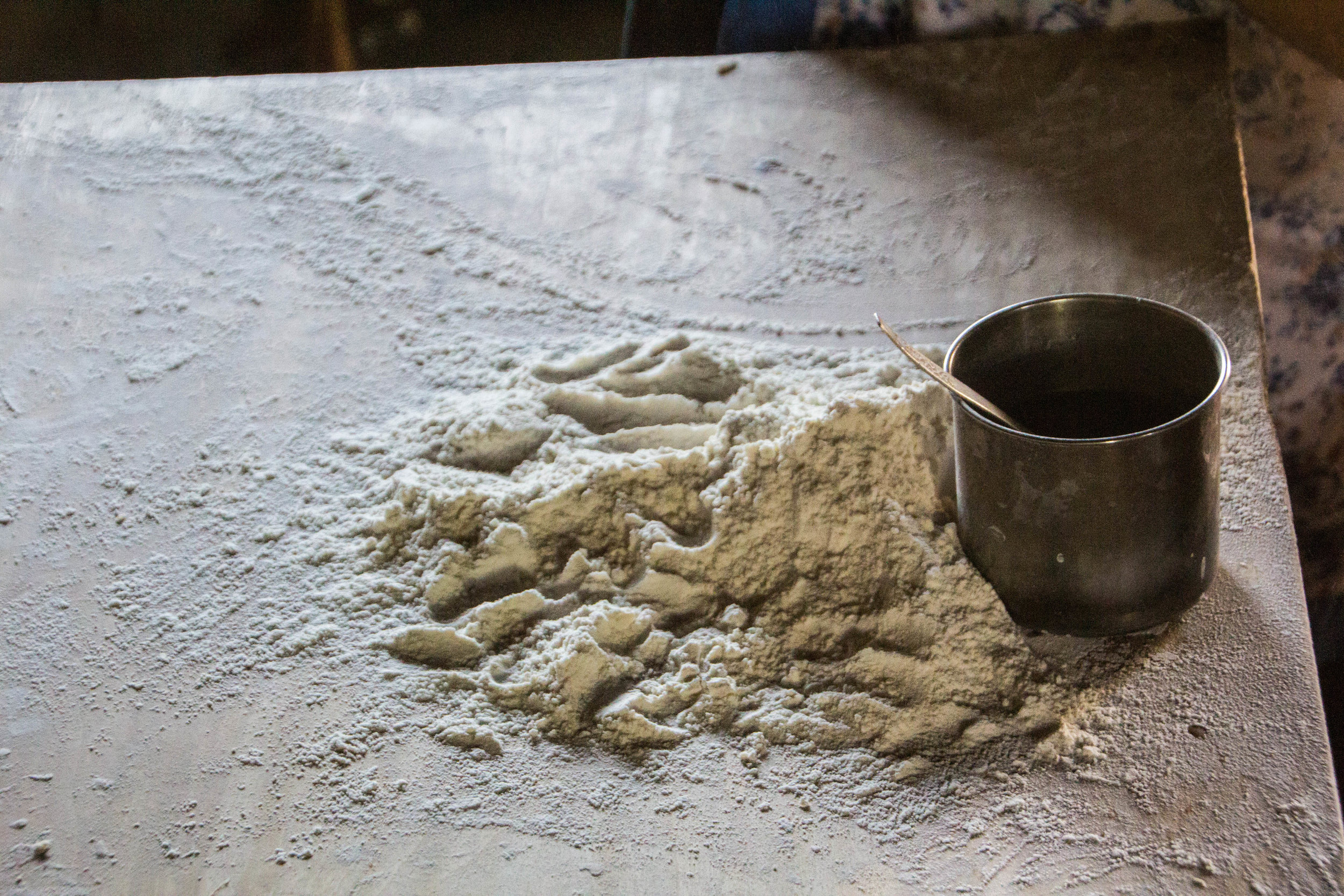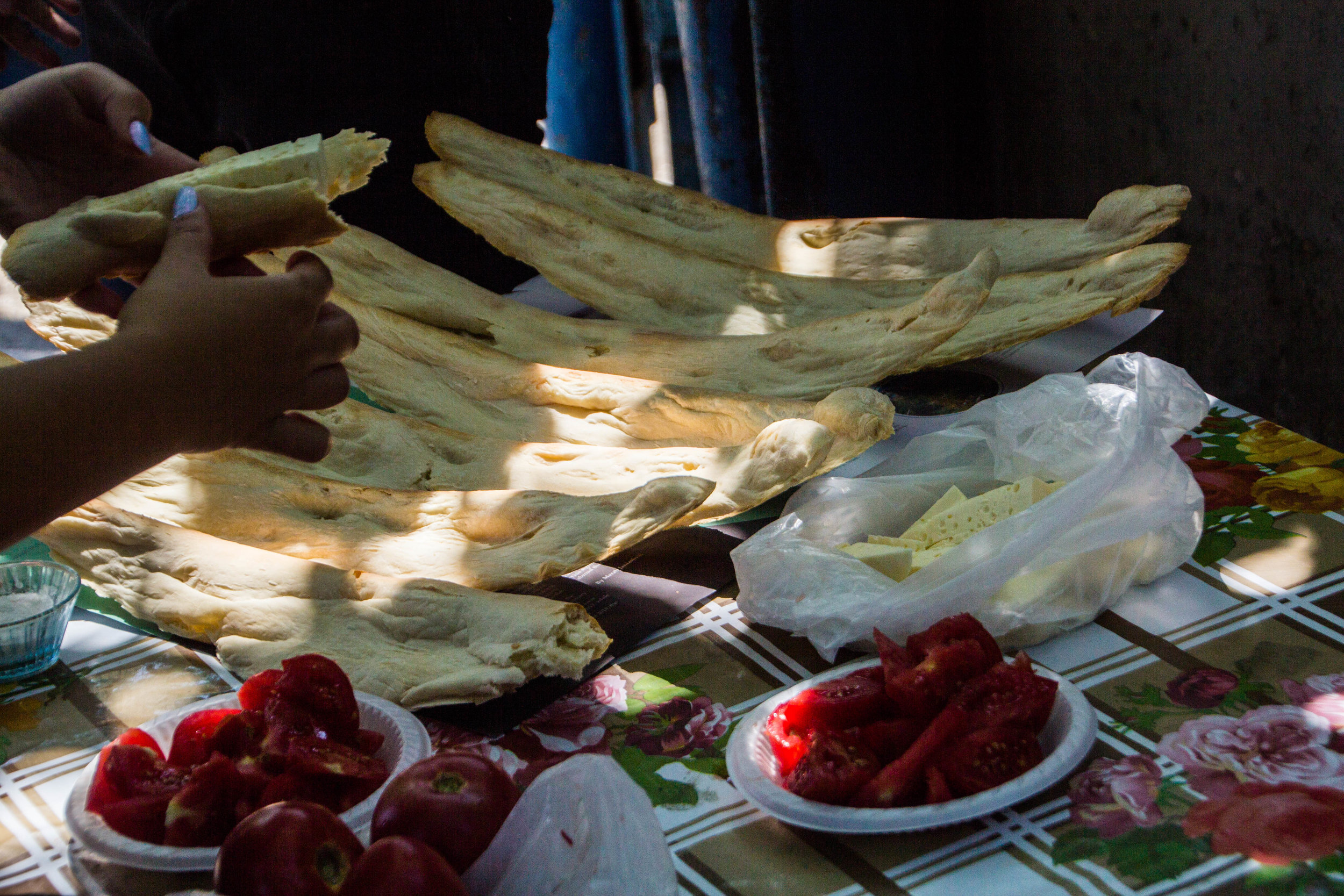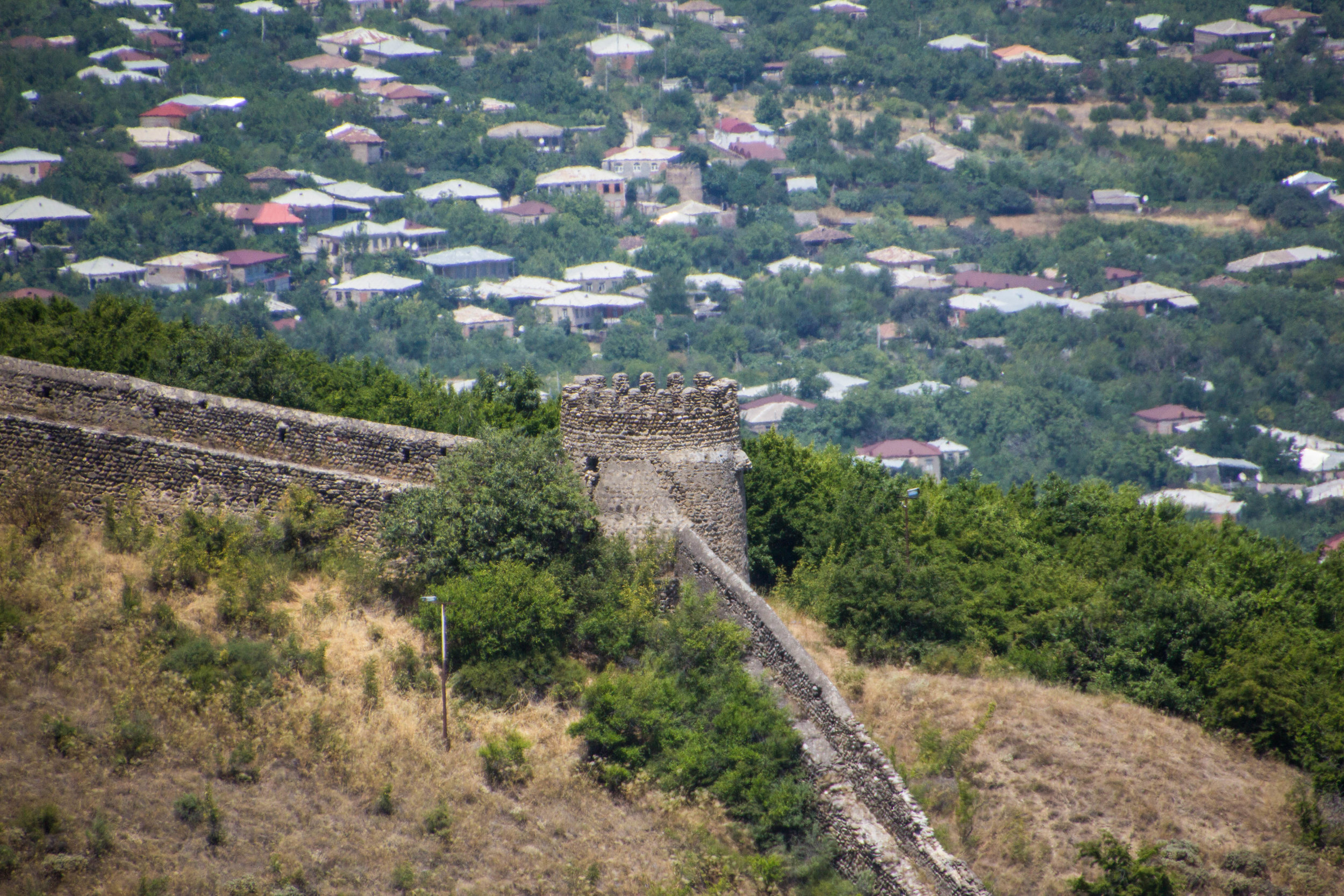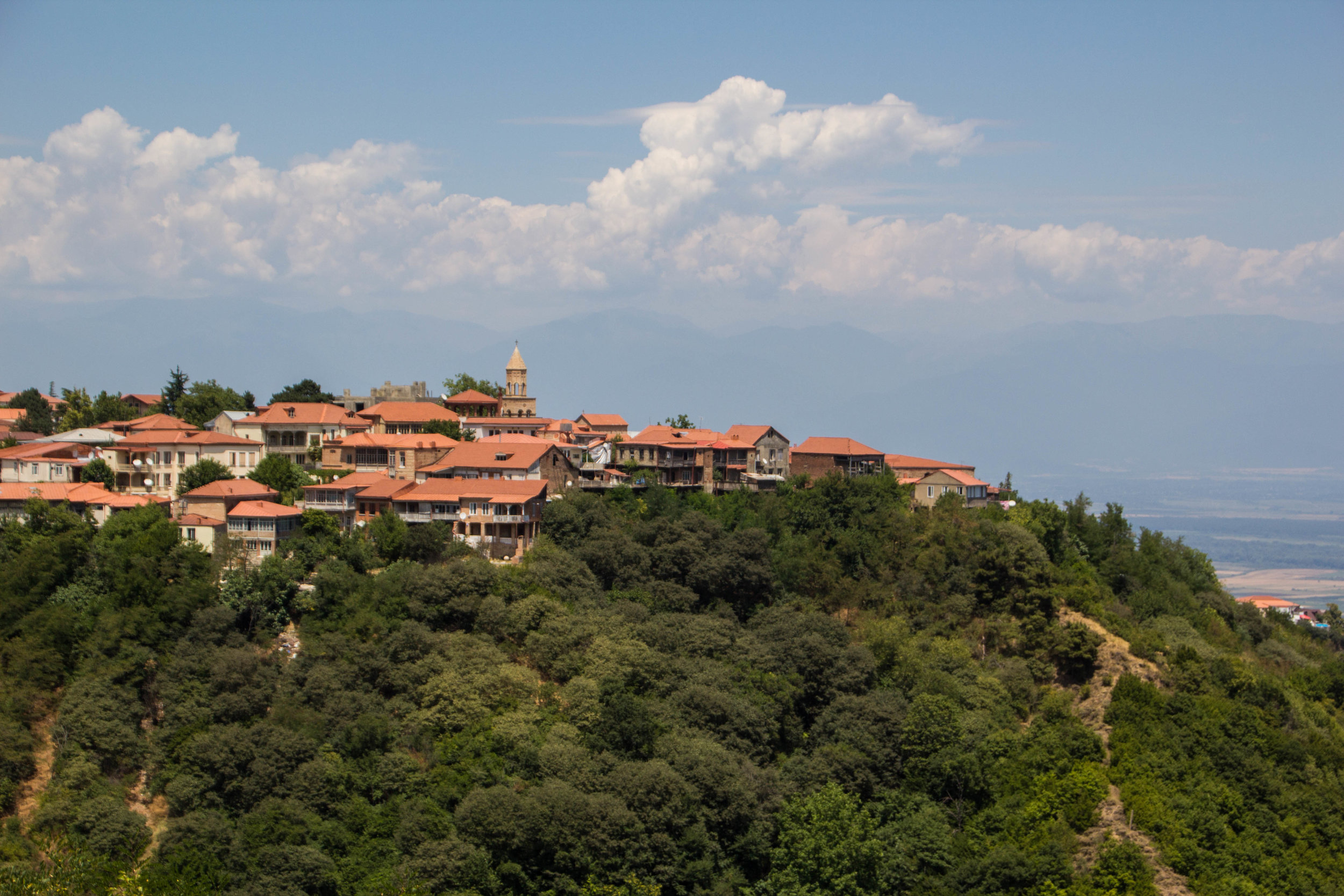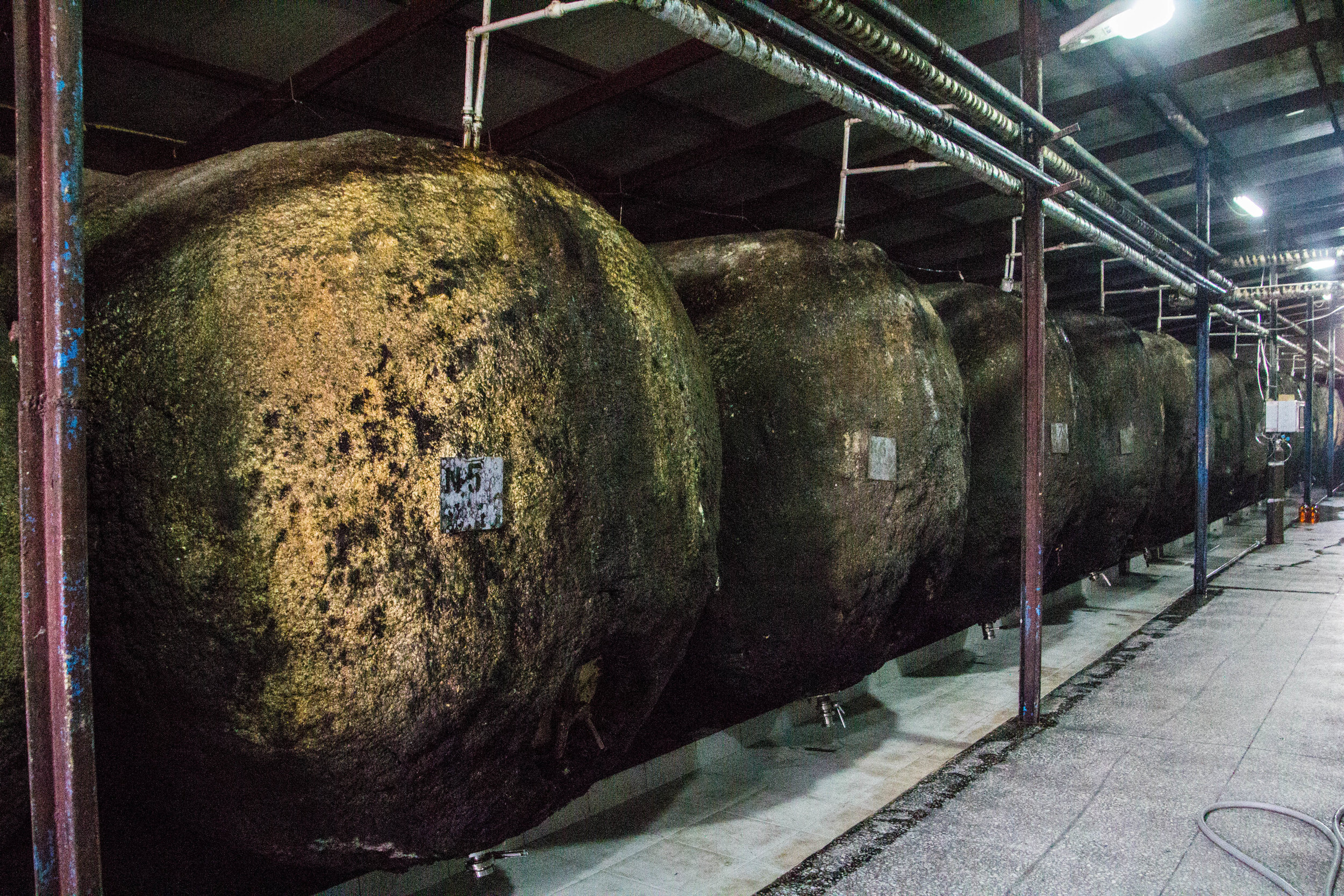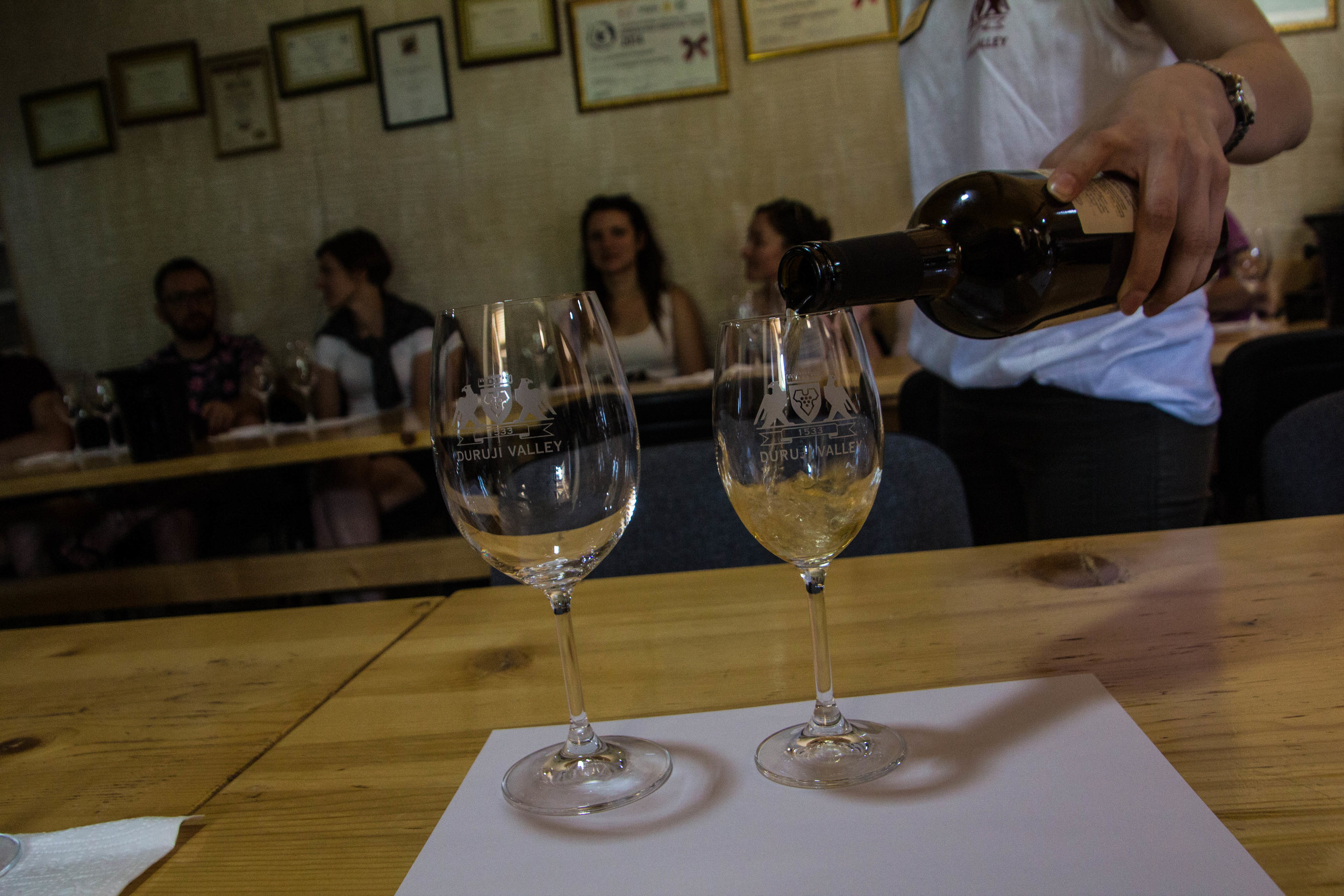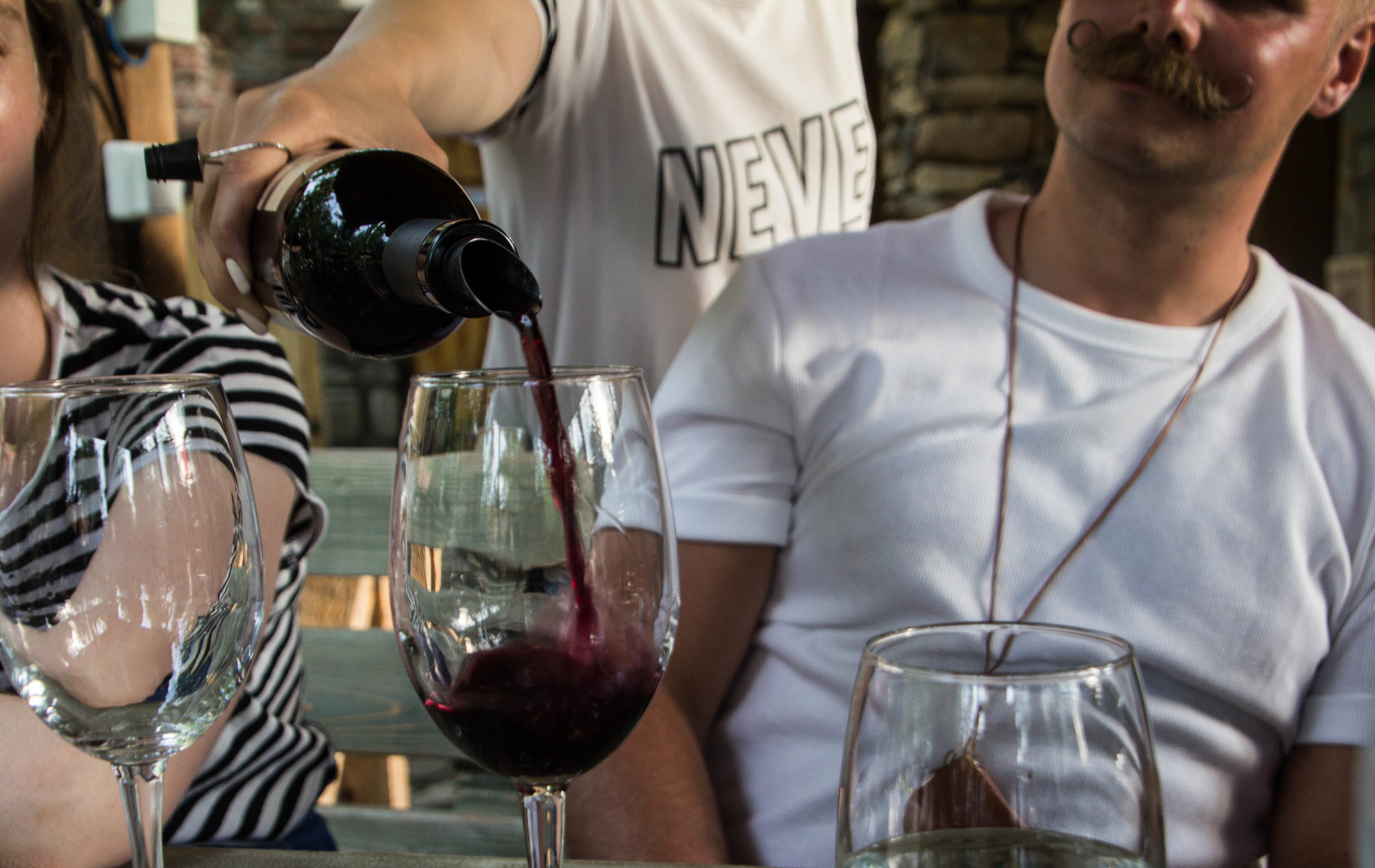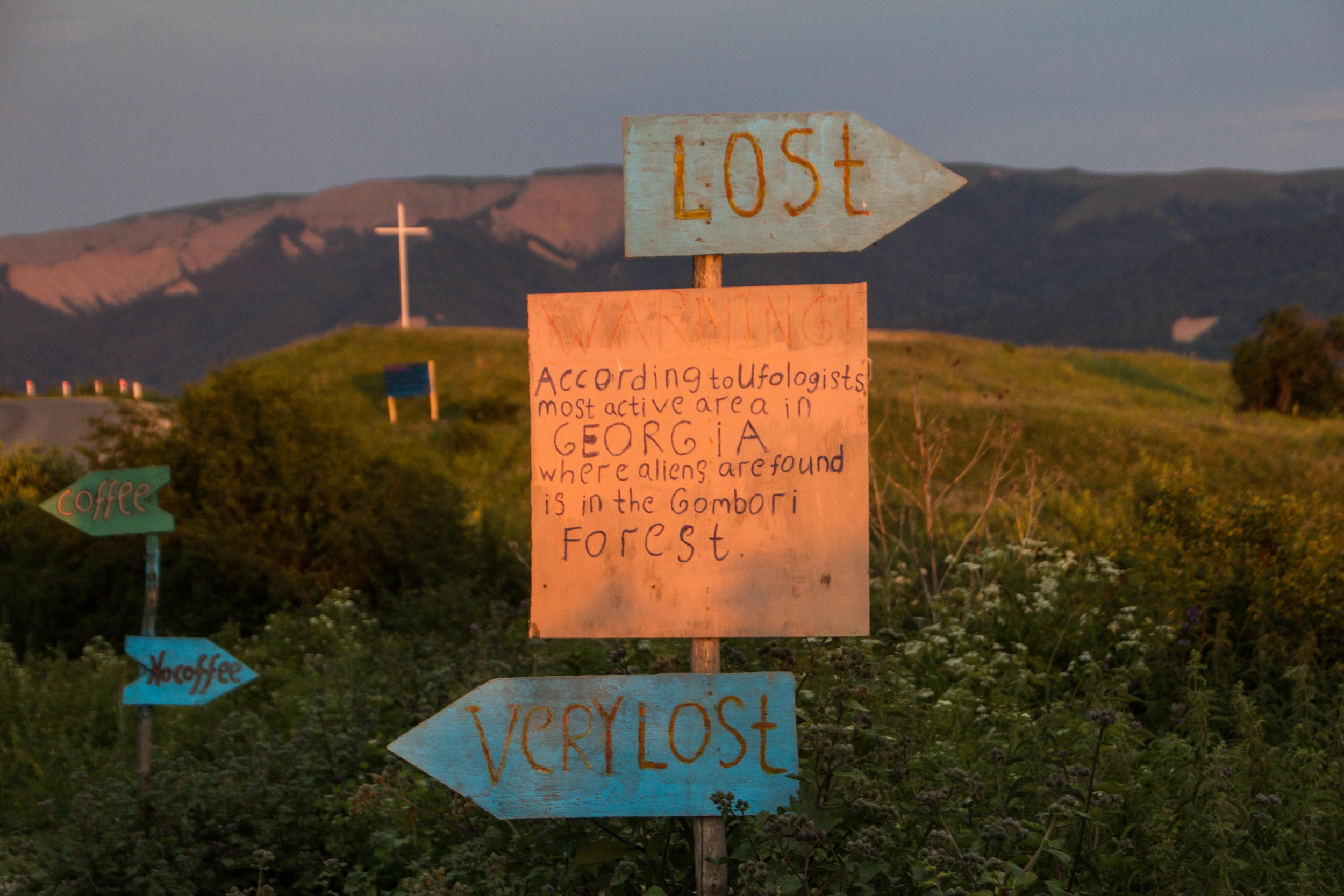Tbilisi was great, but we were eager to get out of the city. Georgia is known first and foremost for its rugged landscapes, so we were pretty sure that there was a wonderland of jagged snowcapped mountains, glaciers, lush green hills, and quaint, tiny villages waiting for us just over the horizon. And in the dog days of summer, Tbilisi was so goddamn hot that the thought of icy glacial winds engulfing my body was borderline orgasmic. I don’t do well in the heat. 😓
Before actually arriving in Georgia, our plans for this country basically had 3 parts.
Part 1: Tbilisi ⭐️
Part 2: The Mountains 🏔
Part 3: Abkhazia ‼️
When we arrived in Tbilisi, I got a cheery, upbeat email rejecting my application for an Abkhaz visa, with no explanation as to why. Based on the political tensions surrounding the date of our visit, I think I can guess why… but this immediately eliminated part 3 from our itinerary. So we needed to find some other stuff to do. I was definitely disappointed, but in lieu of Abkhazia, I knew exactly where else I wanted to go.
Cue our trip to Sighnaghi.
An Introduction:
Kakheti & Georgian Wine Country
Before I get to introducing the actual town of Sighnaghi, I think it’s important that I first explain the region of which this town is the epicenter. Sighnaghi is located in the far-eastern Georgian province of Kakheti. Kakheti was, like most Georgian provinces, at one point an independent Kingdom. So it has its own cultural history, but the facet of this culture that we’re going to be focused on today is winemaking.
Winemaking has been a staple of this region since the neolithic era 8,000 years ago. That makes it one of the oldest wine-producing regions in the world. Armenia might have them beat by a few years, but once you get that far back in time, it’s all more or less the same. Today, Armenian wine tastes like… well, it tastes like wine, the same as you’d expect from Italy, France, Spain, Argentina, or California. But Georgian wine tastes quite different. Georgian wine tastes close to the same as it did thousands of years ago, which basically means that it doesn’t taste much like wine as you know it today. To be honest, it was hit or miss for me. Some of it was great! But other blends just felt a bit watered-down to me. But overall it was very cool, and I definitely seem to be in the minority for having any complaints about Georgian wine at all.
The reputation of Georgian wine long ago eclipsed that Armenian wine (Armenia has had bigger things to worry about for the past few hundred years) and by the start of the 20th century, it was famous in the surrounding regions. Under Soviet rule, viticulture was an important staple for Georgian SSR, and its role in wine production was solidified under the rule of Joseph Stalin because, if you didn’t know, Stalin was, himself, Georgian. That meant that Stalin had a lot of opinions about Georgian wine. His favorite styles of wine were these:
Kindzmarauli: a semi-sweet red wine, which is made from Saperavi grapes
Khvanchkara: also semi-sweet red wine, which is made from Alexandrouli and Mudzhuretuli grapes.
During Soviet times, these styles of wine were basically all that Georgia made. However, these few varieties of grapes are FAR from all that Georgia has to offer. Georgia endured a lot since the collapse of the Soviet Union, including multiple, concurrent civil wars and a total economic collapse, but now they seem to be on relatively solid ground. That means that suddenly people in Georgia have the bandwidth to be focusing on things like art and culture again! And this has sowed the seeds of viticultural renaissance in Georgia.
You should know that Georgia’s winelands actually contain a greater variety of types of grapes than almost anywhere in the world, and are completely unique from the grapes grown in most Western countries. You see, the western economies (France, Italy, U.S., etc.) have been so interconnected over the past few hundred years that their respective varieties of grapes have started to converge. When one region has some sort of grape-crisis (wildfires, drought, sickness) they will often bring in grapes from other regions to revitalize their industry. As a result, the varieties of grapes found in each of these regions are increasingly less distinct. Of course there are other factors that play into making a great wine, such as climate and soil, but the grapes are a big one.
That means that Georgia is working with a totally new set of materials. And if that fact weren’t enough, it’s also PACKED with all sorts of interesting micro-climates that are unique to Georgia. The untapped potential of this region is honestly insane. Georgian winemakers are only just now starting to work with all these different varieties of grapes that have been collecting dust until now, and while that is very exciting, it doesn’t promise huge results any time soon. New styles of wine takes a long time to cultivate and hone, and Georgia is right now at the beginning of this journey. Expect to be hearing a LOT more about Georgian wine over the next few decades.
Anyway, these microclimates I was talking about are sprinkled all over Georgia, but the biggest cluster of them is found right here, in Kakheti. So the wine from this region is a big deal. And the town of Sighnaghi—for cultural and touristic purposes at least—is basically the nucleus of this province. Let’s jump into the car and get ourselves over there!
A Day Trip To Sighnaghi
& The Surrounding Areas
We did this trip via a guided tour arranged through Envoy Tbilisi, which is the hostel where we were staying. I also stayed at their second location in Yerevan, Armenia the week prior. Let me tell you, there are few things as fun as traveling solo to a good hostel. The Envoy is a GOOD hostel. However, this particular tour had a few speed bumps. I’ll get to that later.
Early in the morning, we departed from Tbilisi traveling east in a big white van. Our first stop was at the side of the highway in a little hut where we got to see what is apparently traditional Georgian bread making. The woman pictured below would take loaves of dough (can you call uncooked dough a loaf yet?) and would slap it against the wall of an open-top, cylindrical, brick kiln. The dough would stick to the walls, and once it started to look nice and crispy, she’d peel it off. Aside from the whole sticking-the-dough-to-the-wall thing, nothing else stuck out to me as being uniquely Georgian. The bread was DAMN good though.
People rave about Georgian food. Apparently there are some trendy Georgian restaurants popping up around New York City. I will say that on day 1 in Georgia, I loved it all. By day 7 in Georgia… I was over it. It’s 90% bread and cheese. Which normally I would love, but it turns out that there is such a thing as too much of a good thing. They make a mean loaf of bread though.
From there, the roads quickly grew smaller and the terrain quickly grew more challenging. After winding our way up a steep hill, we emerged from the wilderness into a crowded parking lot. This was the gateway to Bodbe Monastery. As is often the case with major tourist attractions in the middle of nowhere, a small economy of beggars and tin roof shacks selling water, ice cream, and other small items had popped up around this parking lot. There was even a bathroom with an old lady charging admission standing at the door. Needless to say, I opted to pee in the bushes. It wasn’t a great start for this site, but whatever was in store for us on the other side of this gate, it wasn’t our destination. It was just a bonus.
The full name is the Monastery of St. Nino at Bodbe, but in the travel world, people just call it “Bodbe.” St. Nino was a woman by the way. I assumed she was a man 🤷♂️. Anyway, according to tradition, St. Nino witnessed the conversion of Georgians to Christianity, and then withdrew into a nearby gorge where she died somewhere in the ballpark of 338-340 A.D. A small monastery was built at her grave site, and as the years passed, it eventually became the site of choice for the coronation of the kings of Kakheti (which was, at this time, was an independent kingdom). It later suffered under Persian conquests into the region, but was restored to become one of the largest depositories of religious texts in Georgia. It was basically smooth sailing for this place until the Soviets took over and turned this place into a hospital. But after the collapse of the USSR, Bodbe returned to its religious roots, and was converted into a convent. There are a few pictures of it below. Don’t even try to tell me this doesn’t look like Italy!
I remember this being the first place where I came face-to-face with the strict rules of the Georgian Orthodox church. If you’re inside the church, you need to be wearing pants (not shorts) and you are rarely allowed to take photos. I got scolded hard by a mean Georgian nun in one of the churches in the Bodbe complex. 🤷🏻♂️
From there, it was a relatively short drive down the road before we arrived in the center of the town of Sighnaghi. If there was any doubt that we were traveling through Italy’s long-lost cousin before, that doubt disappeared here. Of course there were differences, but the similarities were too glaring to ignore. Sighnaghi is not even close to being the largest town in the Kakheti region, but it has become center for culture and travel nevertheless. This is where I started to get a bit frustrated with the group that I had come with, because people were really trying to hustle through this town quickly! I would have liked to have had more time to explore it. But I snapped a few good pictures anyway, and definitely feel like I got the “gist.”
Although the Kakheti has been populated since the days of woolly mammoths, the town of Sighnaghi was not formally founded until the early 1700s. Then, in 1762, King Heraclius II of Georgia elevated Sighnaghi from a small settlement to a bonafide town by sponsoring the construction of additional formal infrastructure and building a fortress to defend the inhabitants from marauding attacks by scary Dagestan tribesmen. Dagestan is still a region to this day, just across the border in Russia’s North Caucasus. It came up in conversation here and there during my trip through the Caucasus, and my impression is that people here have a long-standing reputation of being violent almost to a comical degree. Almost like cartoon characters. Today they still have all sorts of crazy traditions around wrestling apparently. Anyway, it was probably not as comical back in these days, because it prompted creation of this massive wall to defend the city. Is like 300 years later and the wall is still standing! You can walk the ramparts and climb up to the top of every tower. The view from up there is pretty spectacular. It’s situated on the slopes of a steep hill that slopes downwards into an extended area of flatland, so you can see a LONG way from up here.
On the way out of the city, I caught a passing glance out the window of what seemed to be the quintessential view of Sighnaghi across a small valley from a nearby hill. Clearly our guides had no intention of stopping, so I had to yell at them to stop the bus so I could jump out, run back down the road, and grab a couple of pictures. Hate to be the guy, but whatever. Gotta do it for the ‘gram!
Visiting a Georgian Winery
From Sighnaghi, we sped out into the countryside. We were driving for quite a while, speeding through lots of small Kakheti towns, before we finally pulled off for our next destination of the trip: a traditional Georgian winery. We actually visited a few different wineries before finally piling back into the van and speeding back to Tbilisi. I’m sort of lumping them all together here.
The only wineries I had been to prior to this were mostly in Napa Valley (plus a couple random ones in Middle America), so that was my only basis for comparison. I’m no sommelier, but I definitely noticed some unfamiliar things. I would come to learn that most of these unfamiliar sights owed to an ancient winemaking technique known as Qvevri wine making. A Qvevri is a large, egg-shaped clay (or earthware) container used for making, aging, and storing wine. These giant clay jugs are stored in giant holes in the ground dug into the floors of wine cellars. Apparently this is a relatively common fixture in Georgian homes!
The second photo in the gallery below shows a stone floor with round openings every few feet, covered with round stones. These stones cover the tops of giant industrial-scale Qvevris. Removing these center stones would reveal the “cork on the bottle” so to speak. However, you’ll also see in this gallery below that these traditional methods were mixed in with lots of more modern machinery as well. Most of these wineries seemed to be a hybrid of old and new, with local grapes as the one common denominator.
We sat for a few wine tastings at the various wineries we visited. My taste in wine is pretty well established at this point, so it was no surprise that I gravitated towards those wines that bore the closest resemblance to dry reds. The more traditional varieties of Georgian wines tended to be white wines with a watery taste profile that I didn’t love, but there was also a lot of wine served that had clearly been produced through more modern techniques. Some of these were actually great! Needless to say, by the time we arrived at our final stop of the day (dinner), we were all either drunk or very tipsy.
Drinking (& Eating) In A Georgian Household
As a part of our tour of Georgian wine country, we finished with a meal in the historic wine cellar of an actual Georgian household. Our host was an elderly woman who apparently hosted tour groups for some extra cash. And like grandmothers from pretty much every culture around the world, she went all out with her food preparations.
There was a wide diversity of food on the table, but all you really need to know is bread and cheese. That’s what all Georgian cooking boils down to. So much bread and cheese. Oh, but also traditional-style Georgian wine. It was poured out of a large ceramic jug into a second ceramic vessel that was somewhere between a cup and a bowl. Honestly, I didn’t like it too much, but that was irrelevant. When you’re being served a meal of this size by an old lady, especially when you are guest in their culture, you suck it up and EAT!
Or drink. Because in this case, the famous Georgian toasts started quickly, and they started hard. During these types of Georgian meals, it’s traditional for people to stand up and make a million long-winded toasts, each of which is followed by a drink. In this case, it was the grandmother. She spoke passionately, and one of our Georgian guides translated. The translations took many twists and turns, occasionally diving off on tangents, but always getting back on track. And then we would drink. Remember that we just came from our wine tasting. If we were tipsy before, we were now well on our way to getting hammered. But still, the toasts continued. Spirituality was a big theme. At one point in the toast, she spent 5 straight minutes gushing about how great the Virgin Mary was. Somewhere along the way, the following phrase was thrown out by here translator.
“She was the most respected of all the virgins.”
This must have been a slight mis-translation, but all the native English-speakers in the room all began to giggle and laugh, even as the toast continued. What a strange way to say that! After the toast was over, there was inevitable follow-up banter whispered across the table after the toast was over. “Seriously though, who IS the most respected of all the virgins? Maybe Malala?”
But the giggles came to an abrupt end. It was explained to us that laughing or even smiling while somebody is toasting (or even talking) about a religious figure is extremely offensive. We were told that, in another household that isn’t used to dealing with foreigners, it might have resulted in violence. To be honest, it felt vaguely like a threat. We tried to explain to the translator that we were not laughing at the content of the toast, but rather, the way that it had been translated. But it seemed that our clarifications had fallen on deaf ears. It was awkward… 😬
WHATEVER!
So let that be a lesson! If you ever find yourself in Georgia, and you suddenly realize that somebody near you is talking about the Virgin Mary…. you know what to do.
I get why they were upset… but on the other hand, we were a freaking tour group. Who they had gotten drunk. I’m not gonna waste time feeling bad about this one. Onwards!
Anyway, this tense exchange was quickly swept under the rug as the group reassumed a guise of normalcy and began devoring the remainder of the bread and cheese that had been put on the table. Soon we were all very stuffed. As we wrapped up, we thanked our hosted, and head back to the van. The sun was sliding low in the sky and there were storm clouds off in the distance.
The road back to Tbilisi was one of rugged beauty. The landscape was really incredible! Unfortunately, I had a hard time enjoying it because our tour guide was determined to get everybody to sing songs at the top of their lungs the entire way back. She had been a bit too “in-your-face” the whole day, but I had done my best to go along with things. It was only now, after 9 straight hours of her talking and her trying to get everybody else to talk, that I started to lose it. I cranked my headphones up as loud as they would go try to drown out the back-seat karaoke that lasted us all the way back to our hostel in Tbilisi. I was so frustrated.
However, I got some reprieve from my frustrations when we pulled off at the side of the road to pick up some snacks from somebody’s roadside stand. We pulled over just in time for sunset. So with people’s obnoxious yells and laughs fading into the background, I was briefly afforded the opportunity to take a walk down the side of the road. Aside from a gentle breeze and the sound of a local farmer driving a herd of cows across the road nearby, it was just me and nature for a couple glorious minutes.
All good things have to come to an end. I eventually had to grit my teeth and climb back aboard the fun-mobile. It was a long 2 hours back to Tbilisi with people yelling and singing all around me. I felt like a humbug, but honestly, it was ridiculous. But during that ride, it became clear to me that I was paying the price for taking the easy road. We joined a group tour to come here because it was a convenient way to check something off our list, but really traveling is about stepping outside your comfort zone and pitting yourself against the elements. My brother and I swore a solemn oath that this would be the LAST such tour we would take in Georgia. From here on out, we were traveling with the locals.
Up next, we’re going to take a jump into the snow-capped peaks of the caucasus mountains, and we’ll be traveling exclusively via Marshrutka to get around.
Oh you don’t know what a Marshrutka is?
Hold onto your hats 😉





